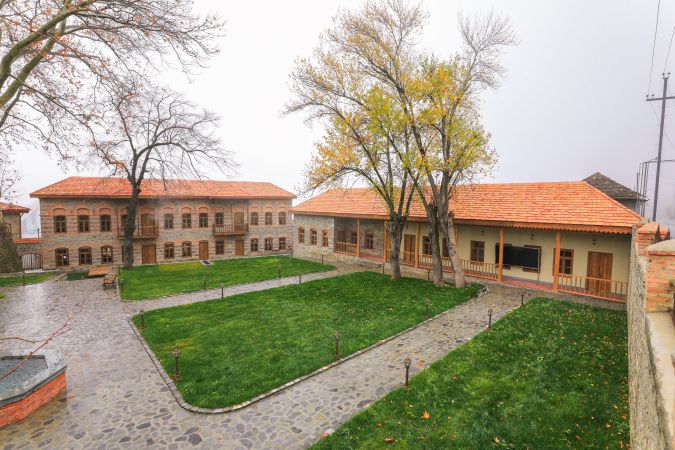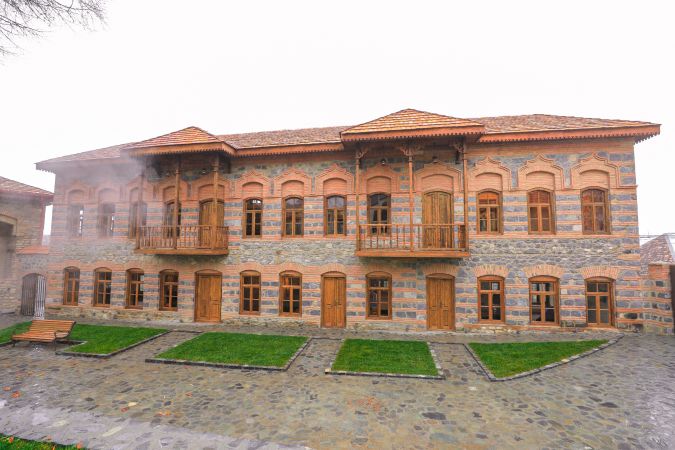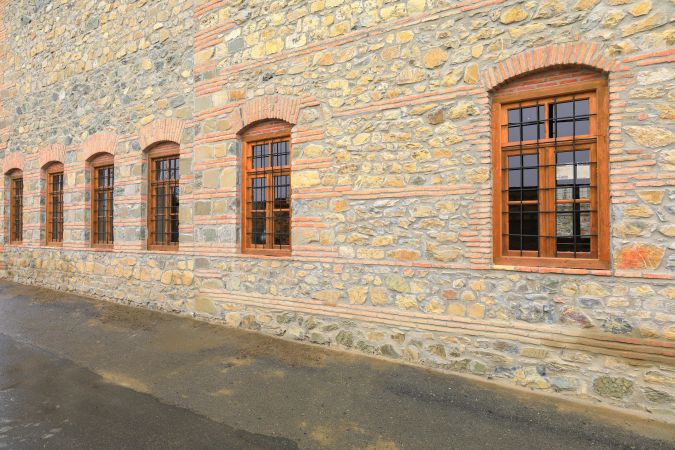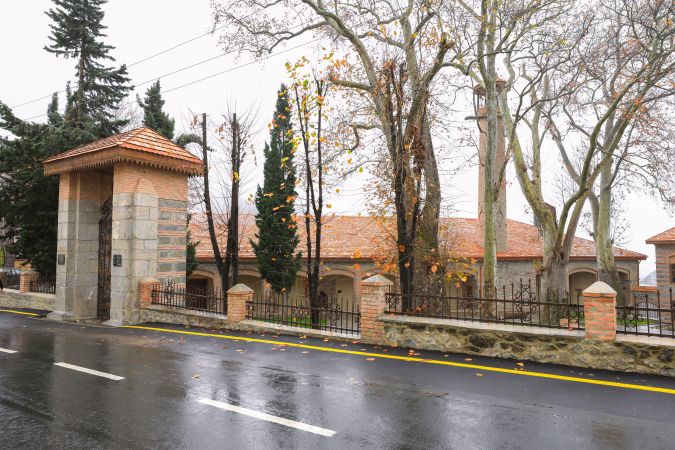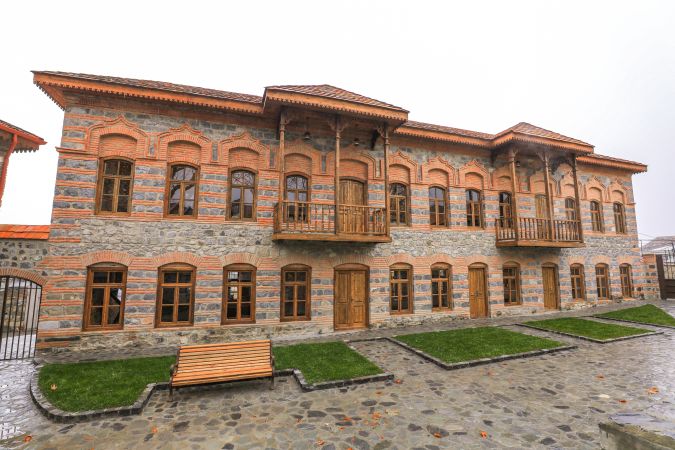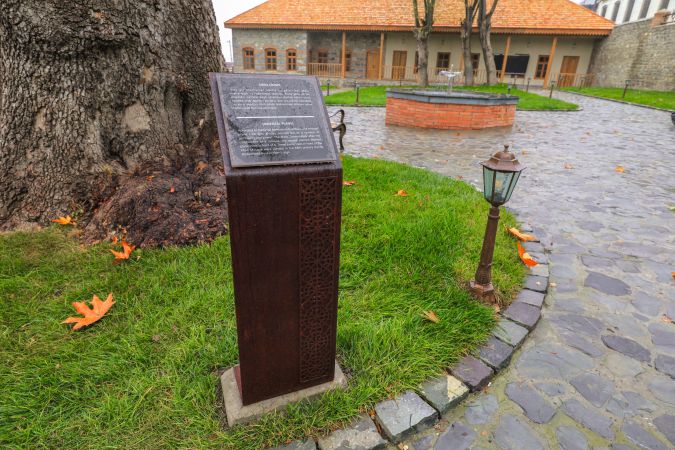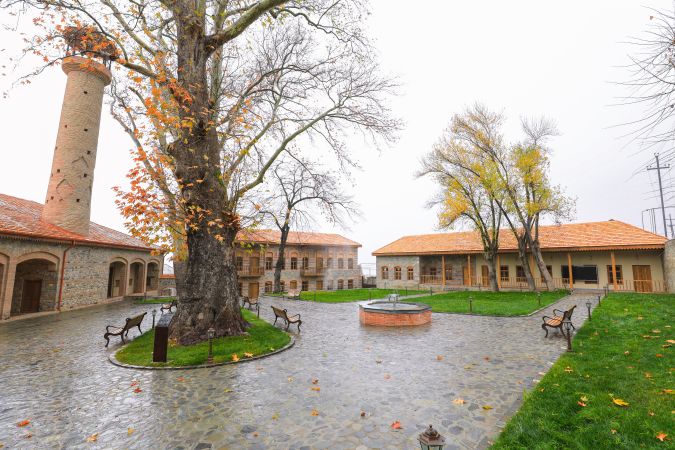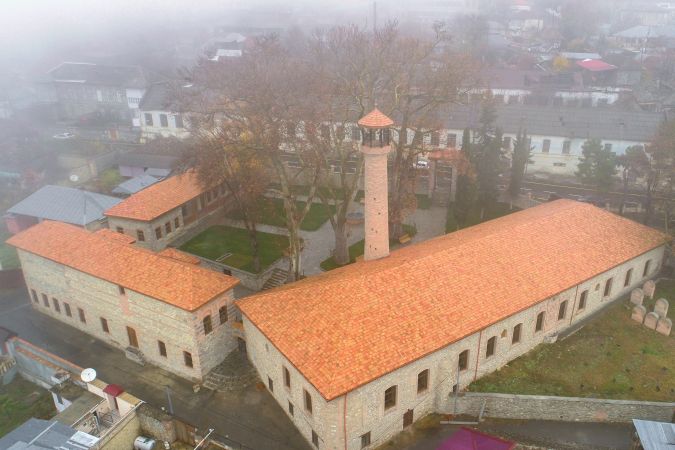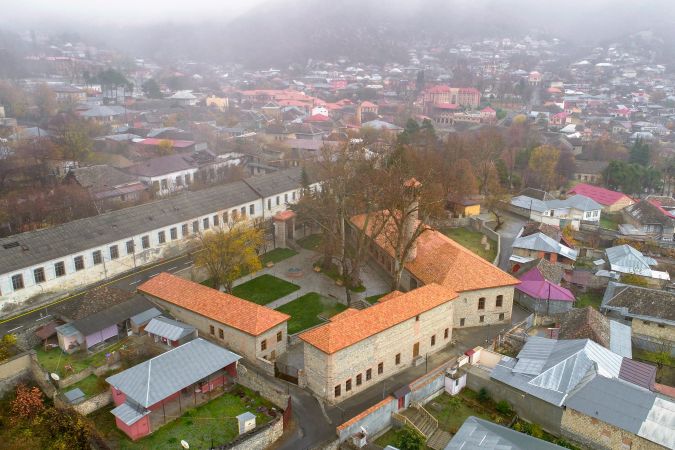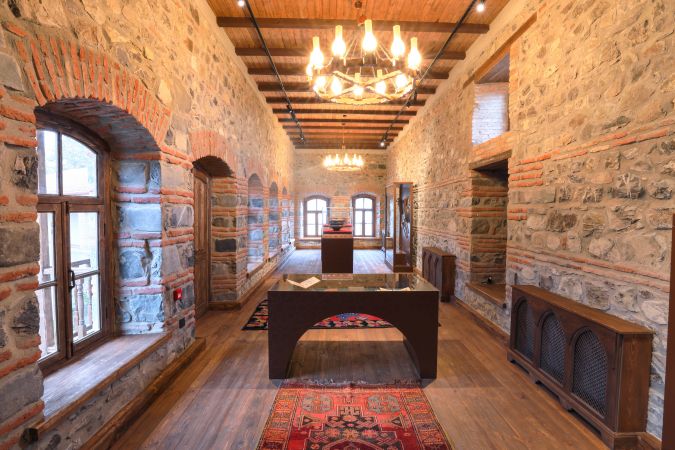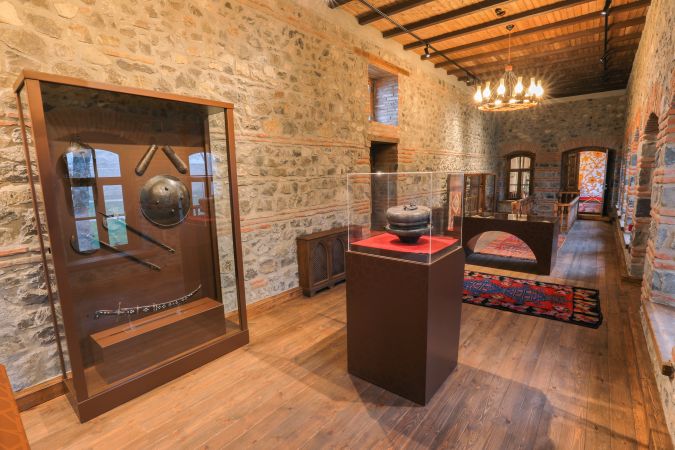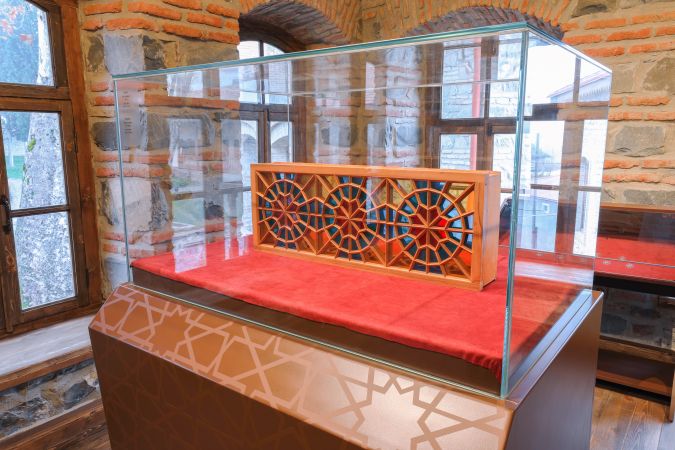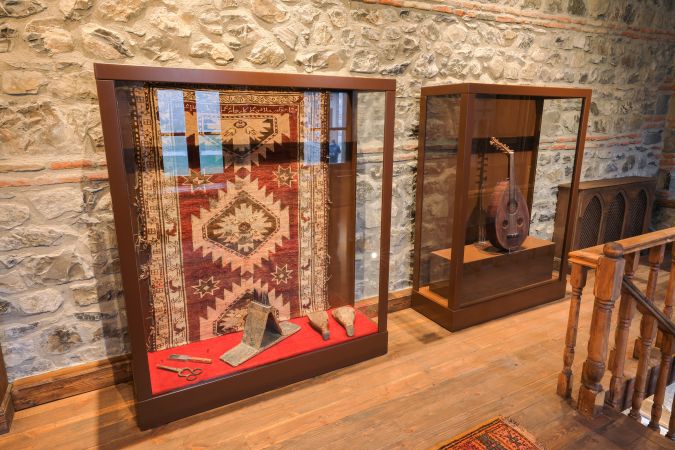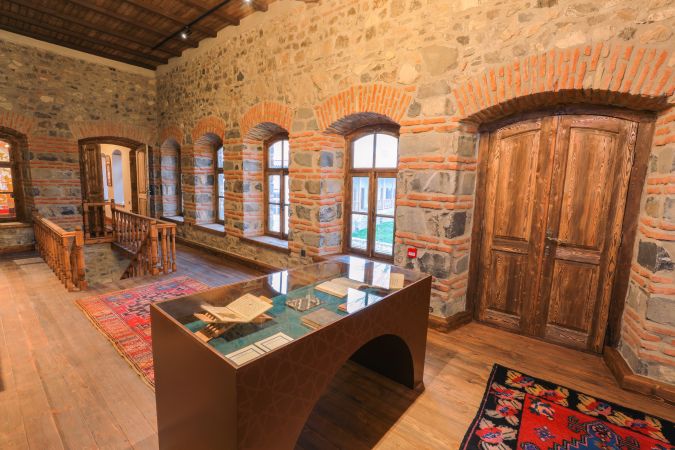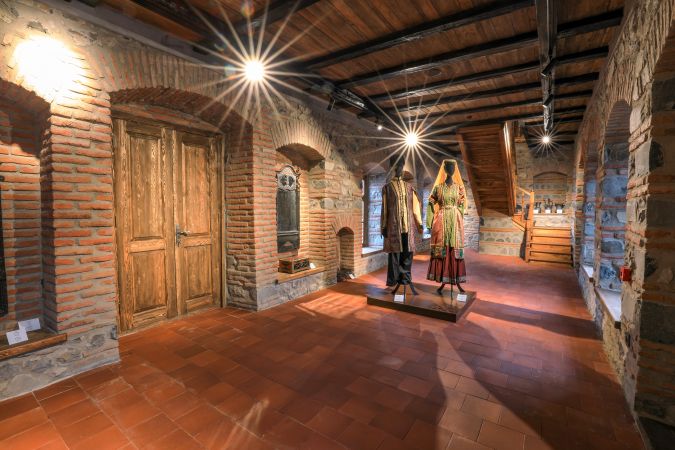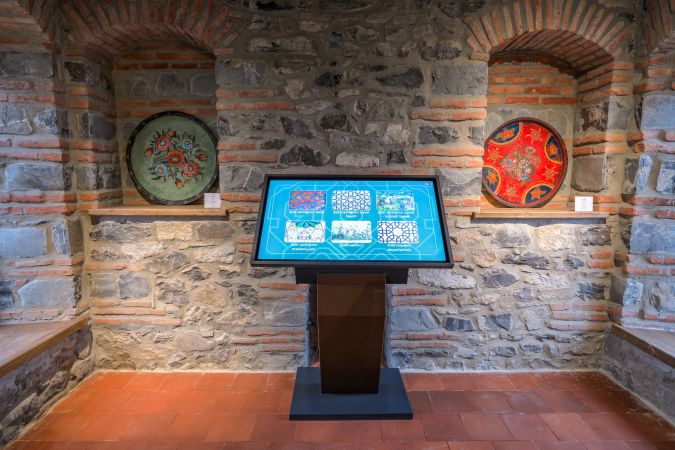Sheki Khan’s Mosque Complex
Sheki Khan’s Mosque Complex was restored by the Heydar Aliyev Foundation.
Restoration works at the historical Sheki Khan’s Mosque started in May 2021. The restoration works were performed on the basis of a project developed by the University of Architecture and Construction ordered by the State Agency for Tourism. The 21-metre minaret of the mosque was constructed using baked bricks and solution of lime. There is a spiral staircase to ascend the balcony. The arched balcony on the front façade of the mosque adds special beauty to the building.
At the time of performing the restoration works, bricks that were found to be useful due to long-term impact of climatic conditions were replaced with new ones. An isolation layer using special materials was created in order to preserve the minaret’s bricks from erosion. At the same time, windows installed during the primary construction of the mosque and the door used by Mahammadhusein khan were restored. Primary views of two windows were restored using an ornament (shebeke), one of the attributes of the local architecture, based on the opinion of architects.
As there was no photo of the mosque’s ceiling, a new ceiling was assembled similar to the ornament existing on the ceilings of the Godek Minaret Mosque and the Sheki Khans’ Palace, based on the decision taken by the State Agency for Tourism and the developers. Interior and exterior walls of the building were restored according to photos taken in 1961.
A new pool was constructed in the place of the old water basin in the mosque’s yard. A protective zone was created around the Khan plane trees and other trees in the yard. Following the project, a building for ceremonies, an ablution room and administrative rooms were constructed on the mosque’s territory. The old entry door and staircase of the mosque, as well as grave stones in the Khan’s cemetery, south of the mosque, were restored.
A museum was created in the yard of the mosque complex. Two-storied, the mosque showcases exhibits related to the Sheki Khanate, as well as material and cultural examples collected at various sources. The museum demonstrates the special place of formation of the Sheki Khanate in our national statehood history.
Copper wares, national garments, jewellery related to the period of the Sheki Khanate, wall mirrors that had decorated homes of Sheki traders of the 18th century, caskets put before them following traditions of Sheki, and examples related to Sheki’s kelaghay-making art are displayed on the first floor of the museum. Information about the history of the Sheki Khanate, the political, social and economic life of the Khanate, its culture, and khans of Sheki are conveyed in the Azerbaijani and English languages on an electronic board.
The second floor showcases the Sheki carpet, various carpet making equipment, the book “History of the Sheki khans” by Abdullatif Efendi and written literature related to the period of the Sheki Khanate, an example of shebeke, coins used in the time of Sheki khans of the 18th century, and examples of weapon related to the 18th and 19th centuries.
The room of the khan is one of the main sections of the museum on the second floor. That room clearly demonstrates that Mahammadhuseyn khan Mushtag of Sheki had prayed in this room, arranged literary ceremonies, held various receptions, and played chess. Here are presented the music instrument “ud”, which had been used during the literary ceremonies held by Mahammadhuseyn khan Mushtag of Sheki, the replica of the throne of Mahammadhuseyn khan Mushtag made during 2014-2015 based on pictures taken from historical sources, and the clothes of the khan made on the basis of miniature pictures in the Palace of Sheki Khans. Moreover, the chess-board of Mahammadhuseyn khan, who had amazed all by his skilful play of chess, and the book of Koran decorate the room of the khan. The flag of the Sheki Khanate used in the 18th century and the war flag of Salim khan of Sheki are also showcased in the room. There is also the writing desk of Mahammadhuseyn khan who had written poems under the pseudonym “Mushtag” and kept correspondence with other famous poets of the time.



